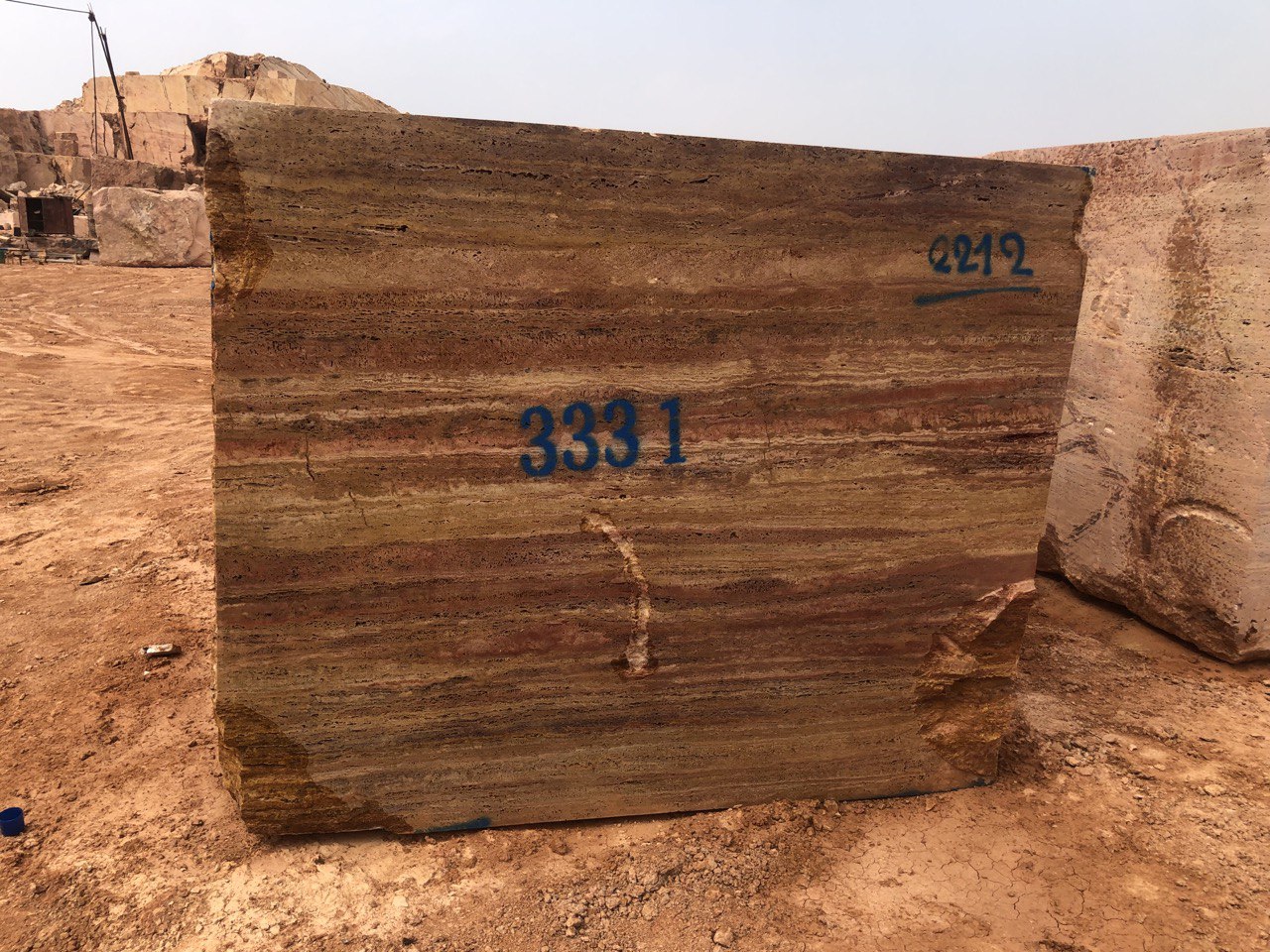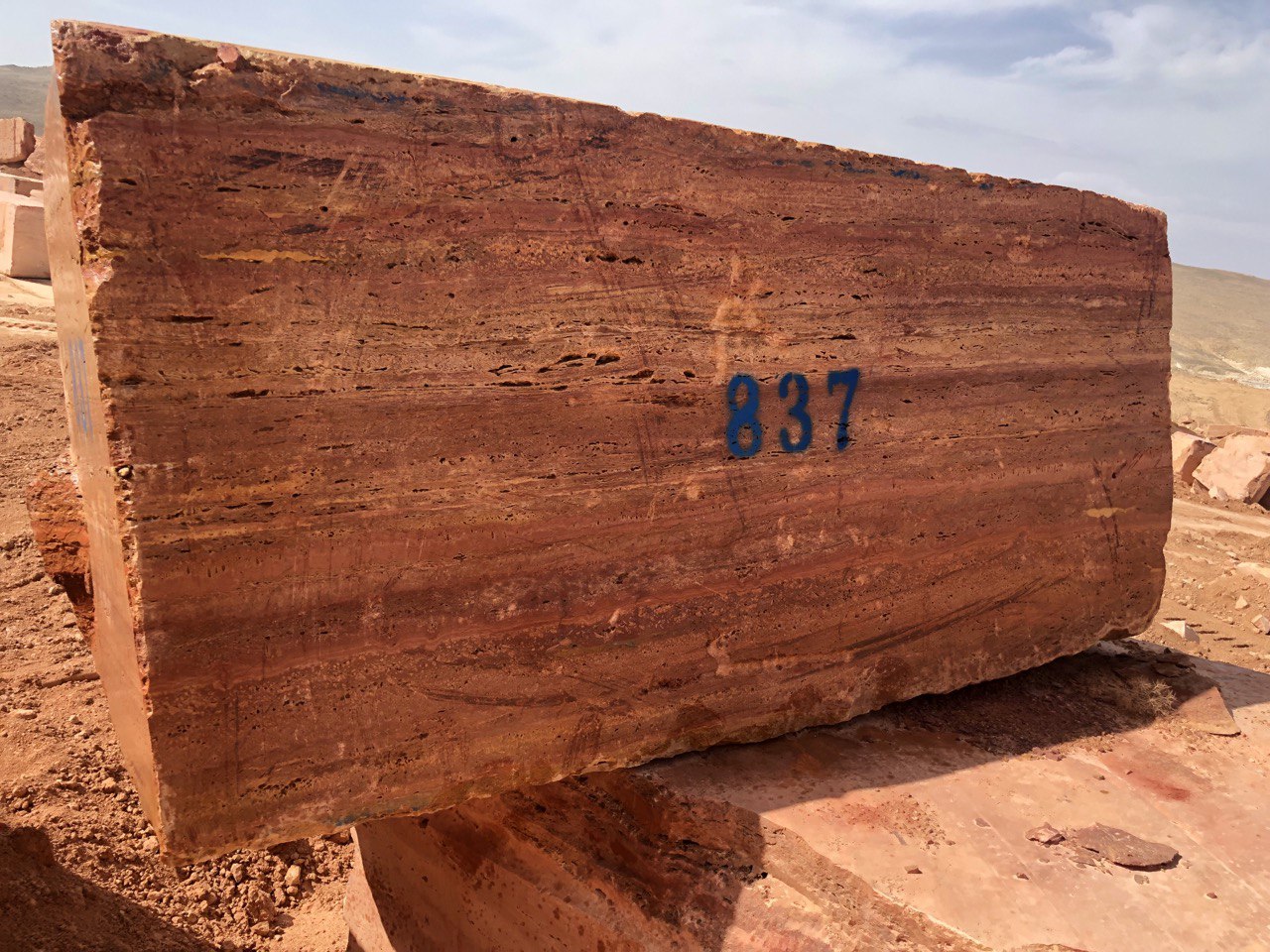
Red Travertine: The Crimson Magic of Stone in Museums and Global Décor
1. In the realm of natural stones, Red Travertine stands as a rare and breathtaking gem. Unlike common beige or golden travertines, this sedimentary stone is defined by its deep, majestic spectrum of reds, burgundies, crimson, and russet hues.
2. The secret of its unique colour lies in the presence of iron oxides (hematite) woven into the stone’s fabric during the deposition process of mineral-rich hot waters deep within the earth.
3. Beyond its mesmerizing colour, Red Travertine offers a naturally porous texture, unique veining, and colour variations in each slab, along with a surface relatively softer than granite, allowing for diverse finishes.
4. These unique characteristics make Red Travertine an exceptional and popular choice for interior and façade design, especially in spaces demanding visual allure, authenticity, and a sense of luxury.
5. Museums: Staging with Crimson Stone
Museums, as temples of art and history, constantly seek materials that offer both durability and the ability to create a timeless, majestic atmosphere. Red Travertine successfully fulfills both roles:
6. Grand Lobbies & Entrances: Using Red Travertine for flooring, wall cladding, and reception counters in museum lobbies creates a profound and memorable first impression on visitors. Prime example: The Louvre Museum, Paris – has incorporated Red Travertine in sections of its modern renovations to create warmth and contrast alongside glass and metal.
7. Opulent Staircases: Wide, central museum staircases clad in Red Travertine become works of art themselves. Lighting accentuating its texture and deep colour creates highly dramatic scenes.
8. Natural Murals: Large slabs of Red Travertine on gallery or corridor walls stand as unique artworks on their own, providing a neutral yet rich backdrop for displayed pieces.
9. Display Cases & Pedestals: Used for sculptural pedestals or framing display cases, it lends warmth and earthy authenticity to precious objects, enhancing their significance without competing for attention. Notable example: Guggenheim Museum Bilbao, Spain – used Red Travertine in select interior spaces to create warm contrast with its exterior titanium.
10. Lounge & Café Spaces: Creating cozy, warm, and luxurious atmospheres in museum cafés or rest zones with Red Travertine flooring and wall cladding elevates the visitor experience.
11. Finish Versatility: A honed finish prevents disruptive light reflection in galleries, while a polished finish suits ceremonial spaces, showcasing the stone’s design flexibility.
12. Middle Eastern Example: Museum of Islamic Art, Doha, Qatar– extensively and majestically used Red Travertine for interior flooring and wall cladding to evoke Eastern warmth and connect with Islamic architecture.
13. Global Décor: Crimson Warmth in Elite Spaces
Beyond museums, Red Travertine has captivated the heart of luxury design worldwide:
14. Luxury Hotel Lobbies: Chains like Four Seasons, Ritz-Carlton, and The Palm in Dubai – abundantly use Red Travertine for flooring, feature walls, columns, and counters to evoke a sense of grand, unique arrival.
15. Urban Penthouses: In luxury apartments in New York, London, Milan, and Singapore, Red Travertine features on kitchen islands, TV feature walls, or in bathrooms as a dramatic focal point signifying distinguished taste.
16. Premium Retail Spaces: Boutiques of major fashion designers on New York’s Fifth Avenue, Place Vendôme in Paris, or Milan’s Zona Tortona use Red Travertine for displays, walls, and tables to convey an aura of exclusivity and artistry.
17. Dream Bathrooms: Combining Red Travertine with dark woods, gold metals, and appropriate lighting for vanities, floors, and walls creates a spa-like luxury ambiance. Its natural resistance to moisture (with proper sealing) makes it ideal.
48. Its maintenance challenges are easily managed with awareness and proper care, and the reward is an exceptional, memorable space.
49. Red Travertine remains one of the most majestic and impactful natural materials available to architects and interior designers worldwide.
50. Its crimson magic continues to celebrate the union of life, art, and architecture.
18. Striking Fireplaces: A Red Travertine fireplace surround brings a sense of centrality and warmth to modern or classic living rooms.
19. Façade Use (Cautiously): In moderate, drier climates like California, Spain, or Australia, it’s used for partial façades, entrance columns, or courtyard walls in luxury villas for a majestic, earthy statement. (Note: Requires strong protection and sealing).
20. Dining & Console Tables: A dining table with a Red Travertine top becomes an irreplaceable focal point in any modern dining room.
21. Interior Staircases: Complex or straight staircases with Red Travertine treads impart a sense of flow and sculptural quality to interiors.
22. Special Public Projects: At Dubai International Airport (DXB) and the Dubai Metro, Red Travertine features in prominent areas to create a unique, luxurious identity.
23. Global Appeal & Endurance: Why Red Travertine?
24. Uniqueness: The natural variation in colour and texture ensures no two projects look exactly alike.
25. Unmatched Warmth: The red and burgundy spectrum adds a deeply warm, welcoming, and earthy feel absent in more neutral stones.
26. History & Authenticity: Its natural formation over millennia evokes a sense of antiquity, stability, and connection to the earth.
27. Design Flexibility: It pairs remarkably well with dark woods (like walnut), warm metals (brass, gold), glass, polished concrete, and even leather, suiting modern, minimalist, contemporary, luxe-industrial, and even classic styles.
28. Relative Durability: Despite porosity (requiring proper sealing), Red Travertine is a highly durable stone for interior use and, with proper care, lasts for centuries.
29. Symbol of Luxury: Its relative scarcity and higher cost compared to standard travertines make it a symbol of distinguished taste and investment in quality.
30. Enhanced Perceived Value: The presence of Red Travertine significantly increases the perceived value and quality of a space.
31. Challenges & Considerations:
32. Cost: Red Travertine, especially high-grade types with uniform colour, is among the more expensive stones.
33. Porosity: Like all travertines, it has high water and stain absorption, requiring initial and periodic sealing with quality products.
34. Acid Sensitivity: Acidic substances (vinegar, lemon juice, some cleaners) can etch or stain its surface.
35. Maintenance: Requires mild, non-acidic, stone-specific cleaners. Avoid common household and abrasive cleaners.
36. Origin: Major sources of quality Red Travertine include Iran (especially Mahallat and Azarshahr), Turkey, Italy, Mexico, and Peru. Quality and colour range can vary by quarry.
37. The Future of Red Travertine:
38. Despite challenges, the undeniable allure of Red Travertine in high-end design remains strong.
39. Advances in sealing technology and finishing methods have made maintenance easier and increased its resilience.
40. Designers are exploring more innovative applications, like integration with lighting or thinner cuts for cladding.
41. Demand for natural materials with strong identity keeps Red Travertine at the forefront of elite design choices worldwide.
42. Final Word:
43. Red Travertine is more than just a stone; it is a statement of boldness, authenticity, and warmth.
44. Its presence in leading museums, from the Louvre to Doha, testifies to its ability to create dignified, enduring, and inspiring spaces.
45. In global elite décor, from Manhattan penthouses to dazzling Dubai lobbies, it brings a unique sense of luxury and connection to the earth element.
46. This fiery red stone, with its golden veins and intricate texture, is like a natural canvas narrating the story of the earth.
47. Choosing Red Travertine is choosing to invest in enduring beauty, strong identity, and a sense of pride in design.



